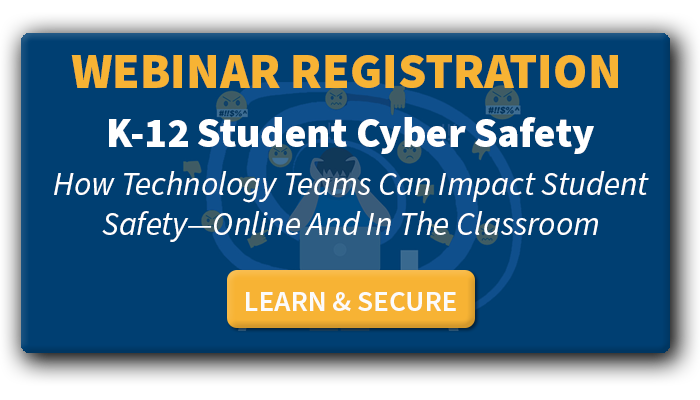Online self-harm monitoring can be an early warning system to help prevent student suicide
According to the latest numbers released by the CDC, suicide is the second leading cause of death for school-age children, right behind unintentional injuries. September is National Suicide Prevention Awareness Month, so we wanted to take this month to look at how district IT teams are becoming more involved in student safety monitoring and suicide prevention.
No technology will ever take the place of human intervention and care in treating students contemplating suicide. However, today’s technology can help detect the warning signs children send out that hide in the digital world. IT teams can give parents, educators, mental health professionals, and students some extra help in spotting problems using student safety monitoring, such as self-harm detection, in school technology used by students.
Self-harm monitoring is even more important now as social distancing and remote learning continues into the fall, and perhaps into the winter months. It is far more difficult to identify a student in crisis across the digital divide than it is when teachers and counselors see students in person every day.
Why Self-Harm Monitoring in School Technology is Critical
Students were already deeply entrenched in school technology before COVID-19 moved much of today’s classroom learning online. We know that there are a large number of instances where students are using school apps to communicate with each other, share pictures and videos, write down their feelings, and more.
Given this trend, IT teams have become important allies in suicide prevention in many districts. Some don’t like the idea of students employing school apps for personal use. It’s understandable that this practice makes many administrators uncomfortable.
On the other hand, many teams recognize that it’s better for students to use school technology as an outlet rather than seeking out alternatives where their behavior can’t be monitored. In many cases, this has meant the difference between students getting the help they need and harmful outcomes. Administrators shouldn’t view self-harm monitoring in school technology as a punishment. They should consider it an important tool in a district’s cyber safety toolbox to help keep their students safe and healthy.
Self-Harm Monitoring and Student Data Privacy
There are completely warranted concerns around monitoring students while maintaining their privacy. For example, many students and parents aren’t comfortable with monitoring for self-harm along with other behaviors in students’ social media accounts and online searches.
District IT teams can help students and parents understand that when the students are using school-issued devices or technology, the teams are under an obligation to monitor for all types of harmful behavior. Districts are responsible for students’ physical safety within school buildings and they’re also responsible for students’ cyber safety online when using school-issued devices and software tools.
For example, the Children’s Internet Protection Act (CIPA) requires that schools ensure the safety and security of minors when using electronic communications. That’s just one of the federal and state laws that are in place to protect our students.
There is another perspective. Some think that school monitoring doesn’t go far enough. In districts where Bring Your Own Device (BYOD) is in place, IT and/or safety teams typically can’t monitor for behavior in the same way they can where school-issued devices are used.
Your district will need to find the right balance of monitoring and student data privacy to protect your students’ safety while meeting the needs of your community. You’ll need to vet any technology vendors to make sure they are FERPA and COPPA compliant.
For example, you’ll need to ensure that your vendors aren’t sharing student information with third parties. You’ll also need to evaluate how the vendor collects and stores student data as one of your primary concerns for protecting student data privacy. This relates to the vendor’s architecture security, which is critical to ensuring that your students’ information won’t be exposed by a data breach on the vendor’s systems.
Ultimately, I think everyone can agree that the most important goal is to get students in crisis the support and resources they need as quickly as possible. It’s true that IT teams in school districts are stretched thin already. Monitoring behavior may feel to those teams like just one more thing to add to their list of things to do. At the end of the day, there is absolutely nothing more important than protecting students.
The work of counseling and suicide prevention should always be in the hands of trained professionals in the schools. But in today’s tech-enabled classroom, IT is the newest ally in everyone’s efforts to help prevent student suicide by using self-harm monitoring and other student safety signals to spot trouble in online apps and chats.

![[FREE WEBINAR] Student Cyber Safety in Schools. REGISTER HERE >>](https://no-cache.hubspot.com/cta/default/6834707/5cd0a157-352c-458b-9676-0ad9bb75645a.png)
